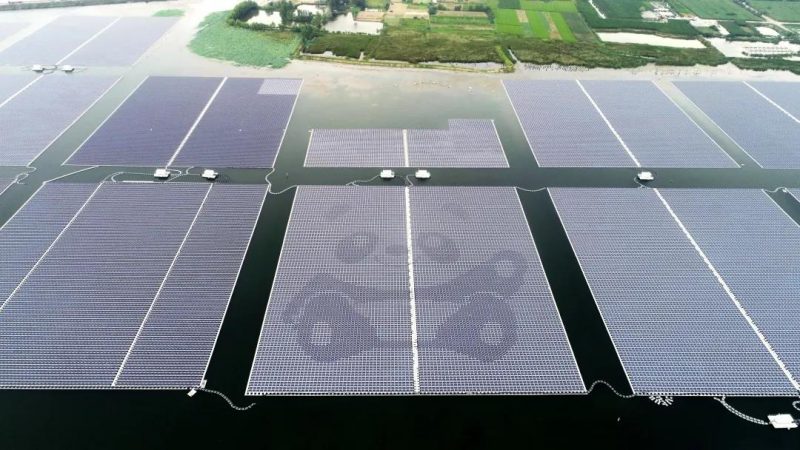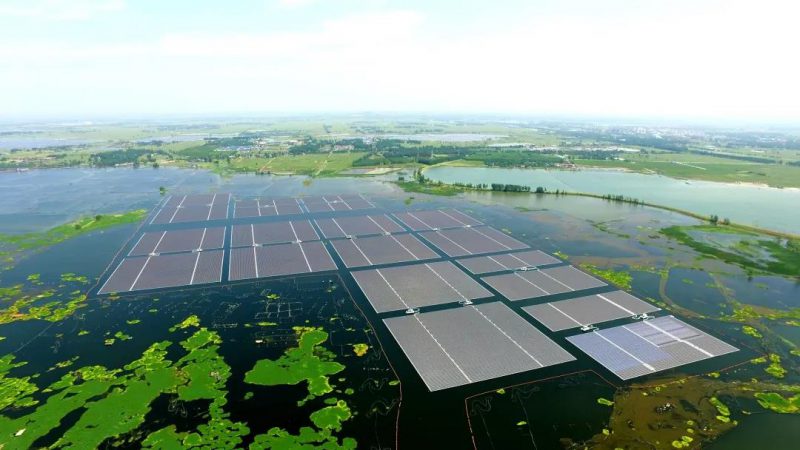PVTIME – In Xinji Town, Anhui Province, a special photovoltaic power station has attracted a great deal of attention since day one. Integrating the image of a giant panda in its design, the floating plant is another innovative project by the Panda Green Energy Group after its Datong project, the world’s first ground “Panda” power station, for which LONGi also supplied modules.

The project has a total installed capacity of 100MW, with the overall floating system solution and body provided by Sungrow. There are three types of floating bodies: main, secondary and aisle, with this project adopting a customized black aisle floating body to display the image of the panda.
Li Xu, a member of the LONGi sales team, recalled: “In 2017, LONGi supplied monocrystalline modules to two arrays of the project. In order to actively support the project construction, our modules arrived at the site ahead of other suppliers. As a result, the two arrays were the first to start grid-connected power generation.”
The project reached full-capacity grid-connected power generation in November 2018, and is expected to produce more than 3 billion kw/h of clean electricity for the local area over its 25-year life cycle.

The “Panda” floating plant is located in a coal mining area of Huainan prone to subsidence, which in the past was not a vast lake area as it is today. In plain areas like Huainan, the groundwater is shallow and, after the ground collapsed due to the mining activity, it was exposed. Under the water, there were a number of ‘disappeared’ villages including Bali, Beifanmiao, Zhangtong, Tongying and Huangwan, the subsidence having brought irreversible changes to the lives of the local population.
In recent years, China has seen a sharp increase in floating power station projects and, indeed, has become the world’s most important market for projects of this type. The construction of floating power stations in coal mining subsidence areas can not only regenerate “waste water” into a brand-new power station carrier, but also maximize the self-cleaning capability of the stations themselves, purifying the water quality by covering the surface to reduce evaporation and inhibit the growth of microorganisms.
In addition, floating power stations can make full use of the water to solve the cooling problems encountered by ground-mounted stations. Data from several research institutions shows that, compared with ordinary ground power stations, the energy gain of floating stations can be as high as 5% to 10%, with terawatt-level growth potential in the future.
Up to now, LONGi has supplied high-quality modules for many floating projects. The company’s Hi-MO4 series launched last year is perfectly compatible with mainstream floating products on the market. The design of bifacial glass modules will guarantee the reliable weather resistance of floating projects, while that of high-power modules with frames can significantly reduce the cost of installation and lower BOS and operation & maintenance costs. PERC and gallium-doped patent technologies further ensure the stable operation and high power generation revenue of projects and LONGi will continue to provide its customers with solutions based on high-quality products in the future.










